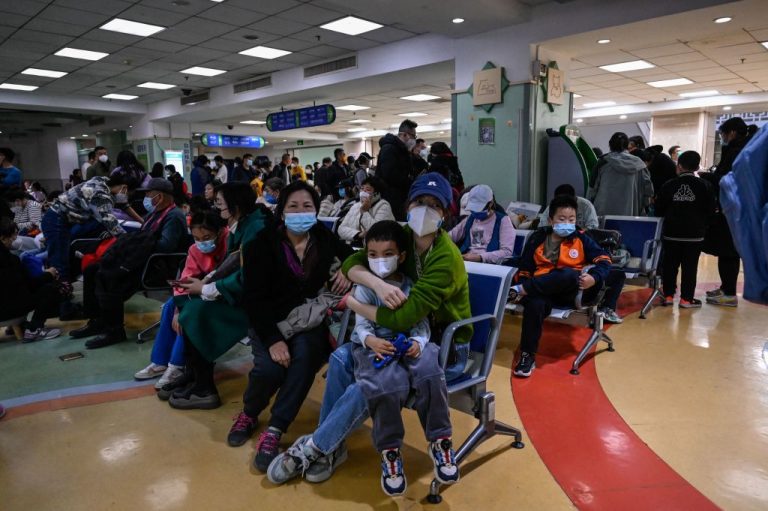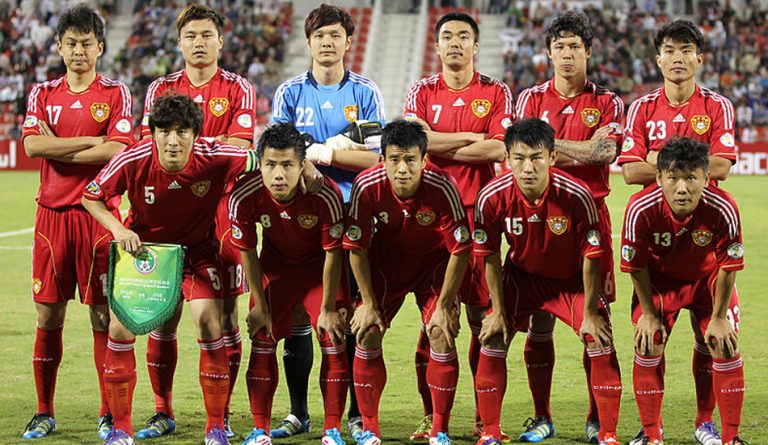Recent reports have indicated a surge in pneumonia cases in China primarily affecting children aged five and above. The development has led to concerns and inquiries — including from the World Health Organization (WHO) — regarding potential new pathogens and the possibility of them spreading beyond China’s borders.
Starting in October, information circulating on Chinese social media pointed to an upswing of respiratory diseases spreading on the mainland, with children in particular being hard-hit by cases of “undiagnosed pneumonia.”
Mycoplasma pneumoniae, which has mainly impacted children in kindergartens and primary schools, have been reported in several pediatric medical centers in northern China. According to officials in Beijing, mycoplasma pneumoniae has been prevalent in the country for three months.
On Nov. 13, China’s National Health Commission attributed the spike to “known pathogens” and claimed that the prevalence of more common strains such as flu, adenovirus, and respiratory syncytial virus (RSV), as well as SARS-CoV-2, the virus that causes COVID-19, has exceeded that of mycoplasma among patients.
But epidemiologists are pointing out that the high occurrence of pneumonia cases in the country is concerning. In comparison, when other countries relaxed COVID-19 restrictions, it was primarily influenza and milder strains of respiratory syncytial virus (RSV) that led to surges in respiratory illnesses.

Success
You are now signed up for our newsletter
Success
Check your email to complete sign up
Pneumonia can be a life-threatening medical condition characterized by lung infection and inflammation. The condition can be triggered by a variety of pathogens, including various viruses, bacteria, or even fungi that can cause the lungs to fill up with pus or fluid. It is also spread through respiratory droplets via an infected person’s coughs or sneezes.
Mysterious resurgence
After querying Beijing, the WHO determined that the reported cases saw no “unusual or novel pathogens” in the pneumonia cases that were linked to children in the nation’s capital. However, the neighboring areas of Tianjin and Shanghai, known as China’s leading financial and commercial hub, saw spikes in the rates of mycoplasma and other respiratory infections, Bloomberg reports.
The increase in cases led to a wave of worried parents rushing their children to hospitals, which are “overwhelmed with sick children,” NBC reports. Images circulating on social media showed packed hospital corridors and children receiving IV treatments as some parents called for the closure of schools to curb the infection’s spread.
On Nov. 22, the Peking University First Hospital was so overwhelmed by patients that activated a “fangcang” (方艙) hospital, the camp-like facilities that appeared during the “zero-COVID’ era, for use as a temporary infusion room to alleviate the rush of people to the hospital.
Emma Wang, whose 7-year-old daughter contracted mycoplasma pneumonia, told NBC News that the hospital they went to in Beijing was “very crowded,” and that the wait time to see a doctor was “two or three hours” long.
In the eastern province of Zhejiang, multiple children reportedly fell ill with mycoplasma and other diseases, prompting several school districts to halt in-person classes until further notice. The outbreak has also seen an uptick in mask usage on public transport and enclosed spaces in metropolises like Beijing and Tianjin.
‘A major wave’
“The fact that only children are affected suggests this is most likely to be an existing pathogen,” said Jin Dong-yan, a virology specialist at the University of Hong Kong.
But Francois Balloux from the University College of London Genetics Institute told BBC that he believes the cases will only intensify as the colder winter months approach. “China is likely experiencing a major wave of childhood respiratory infections that may increase in severity as the weather turns colder. Especially as this is the first winter after their lengthy lockdown.”
One pediatric doctor who spoke with the Chinese-language edition of The Epoch Times reported seeing children with ailments for which no tests came positive. “I have tried all the drugs that could treat mycoplasma pneumoniae, but none have been effective. So, I doubt that this is mycoplasma pneumonia,” the doctor said.
In a video on Douyin, the mainland Chinese version of TikTok, a man showed a test result which appeared to indicate that he had tested positive for five types of respiratory illnesses out of the eight that the hospital could test for.
The man’s test result listed him as “positive” for influenza virus type A, mycoplasma pneumoniae, RSV, adenovirus, and coxsackievirus group B.
For more than two years, China implemented some of the world’s most rigorous virus control measures. But the stringent policies, which included prolonged citywide lockdowns, mass testing, and strict border controls, may have had unintended consequences, experts note. The prolonged period of reduced exposure to various pathogens could have impacted the general population’s ability to develop and maintain immunity against other common viruses.
As a result, when restrictions were eased, China’s population — particularly children — may have been more susceptible to common infections, which could now be contributing to the surge in pneumonia cases.
READ MORE: China Tastes the Bitter Fruits of Its Pandemic Measures as COVID Cases and Deaths Spike
Following a request from the WHO, the Communist Party-run Xinhua News Agency released an article citing officials from the NHC. The statement said health officials were “committed to closely monitoring and addressing” the diagnosis and treatment of children suffering from respiratory illnesses.
But the WHO also noted that since October, there has been a marked “increase in influenza-like illness” in Northern China, which is more pronounced than in the previous three years. “Some of these increases are earlier in the season than historically experienced,” the statement read.
Additionally, researchers have expressed concern over China’s “high local resistance” to macrolides, the antibiotics used to treat mycoplasma infections. “The country has the world’s highest rate of resistance to a type of antibiotics called macrolides,” Airfinity Ltd., a health intelligence and data analytics firm based in London, told Bloomberg.
The situation mirrors global patterns in a post-COVID world, with flu and RSV surges reported in more than 23 countries, the firm noted. Increases in mycoplasma cases have been seen in Denmark, Sweden, and Singapore. The firm also warned of a potential outbreak in Taiwan early next year given “frequent exchanges” with the Chinese mainland.















